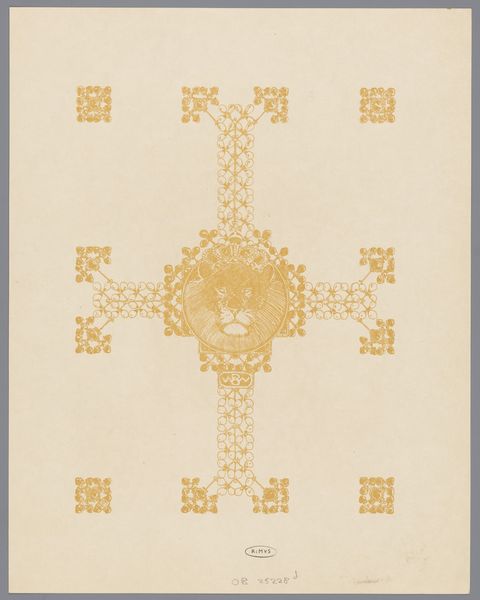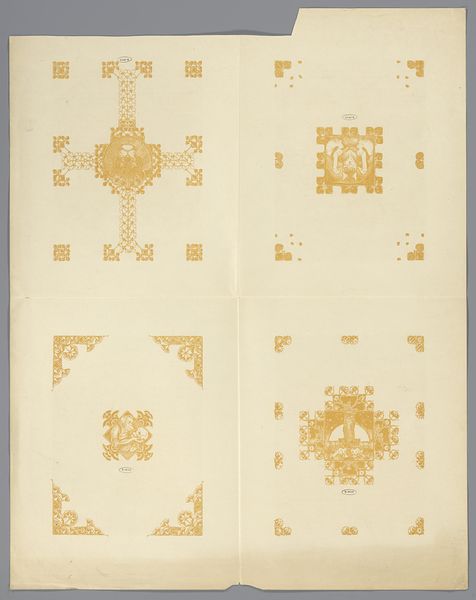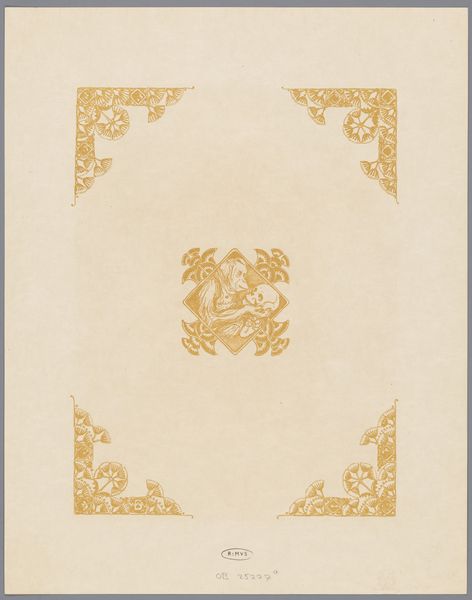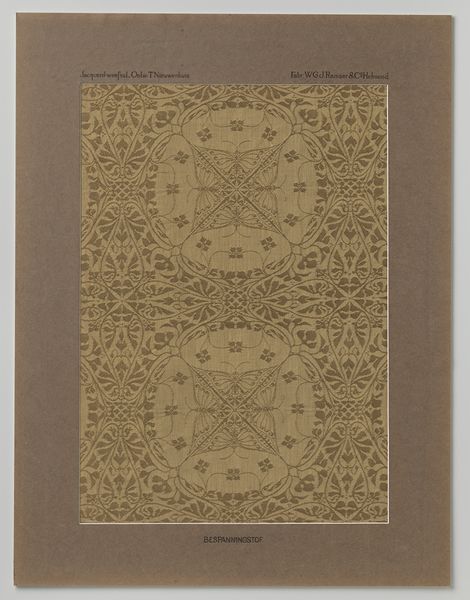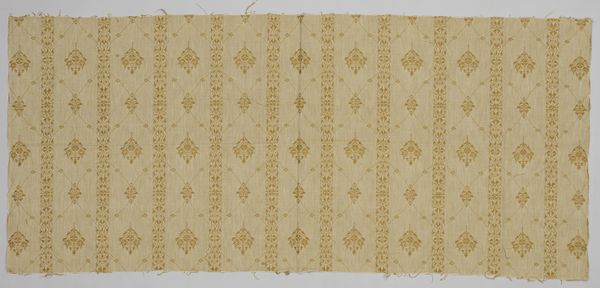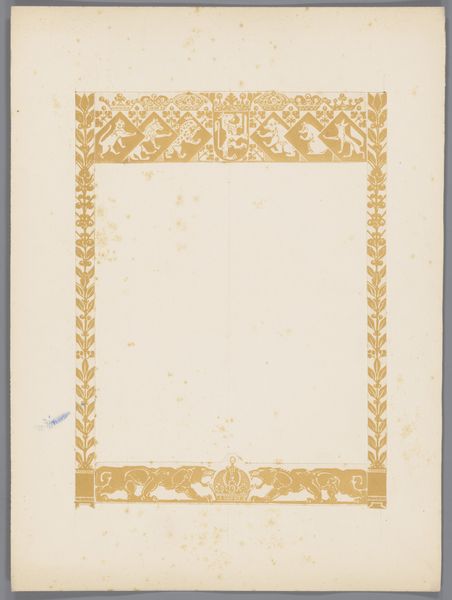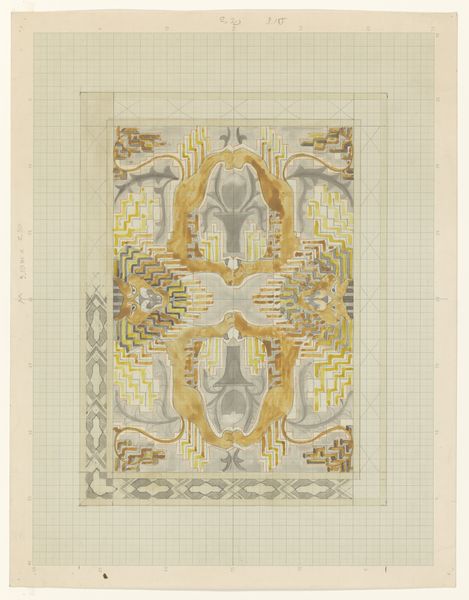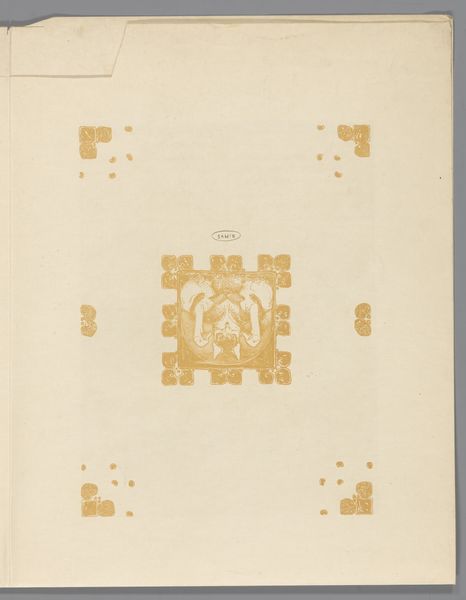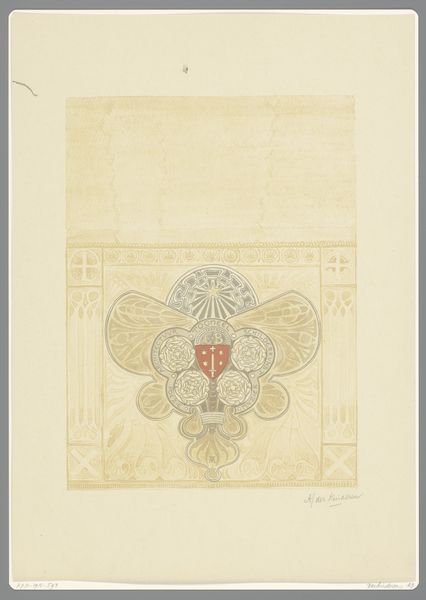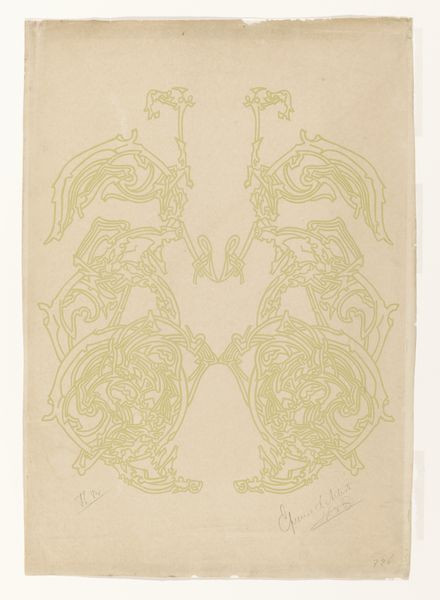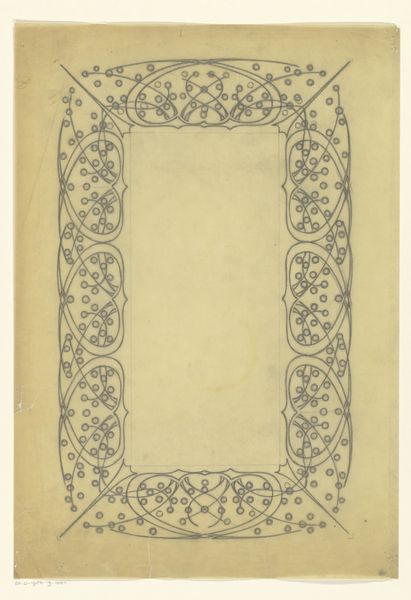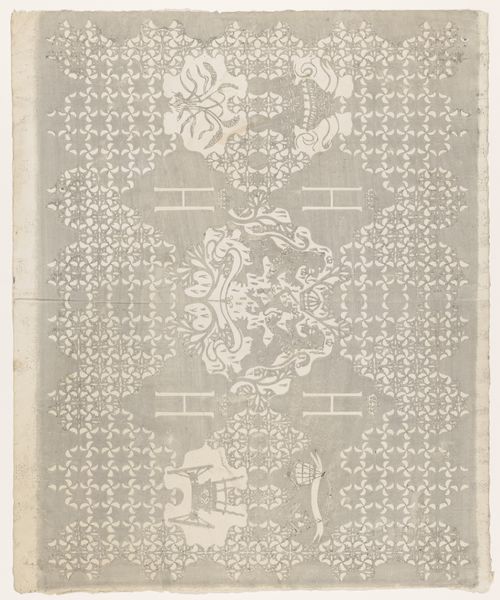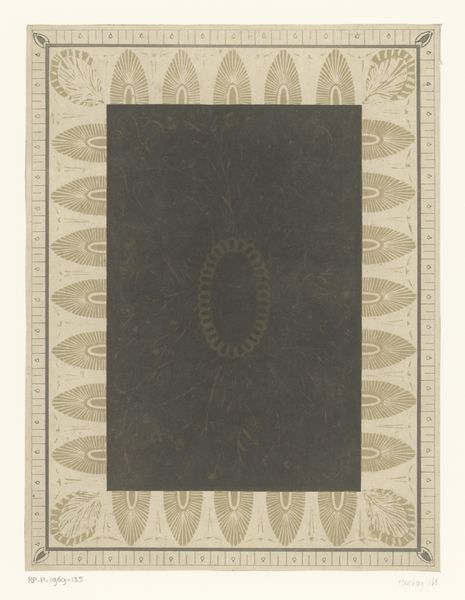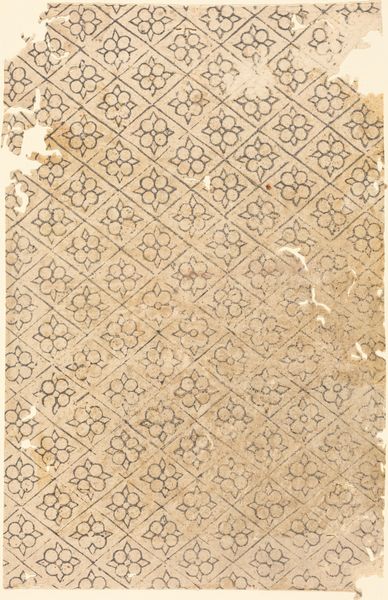
drawing, print
#
drawing
#
organic
#
art-nouveau
# print
#
organic pattern
#
decorative-art
Dimensions: height 336 mm, width 268 mm
Copyright: Rijks Museum: Open Domain
Editor: Here we have “Ornamentiek en uilen,” created around 1910 by Bernard Willem Wierink. It’s a print and drawing currently held at the Rijksmuseum. The symmetrical, repeating patterns feel both soothing and a bit mysterious. What strikes you when you look at this piece? Curator: The interesting aspect for me lies in how Wierink employs printmaking – typically associated with mass production and dissemination – to create what appears to be a bespoke, almost hand-crafted ornamental design. This piece sits at the crossroads of industrial processes and artisanal aesthetics. Editor: So, you see a tension between the machine and the hand? How does the social context factor in? Curator: Absolutely. Art Nouveau, the style it clearly evokes, emerged during a period of intense industrialization. Artists grappled with anxieties about the loss of traditional skills. Wierink’s choice of printmaking, then, could be seen as both an embrace of new technologies and an attempt to imbue them with the qualities of handmade craft, evident in the natural, organic forms and detailed ornament. Editor: The owls contribute to that organic feeling. Were they a common motif at the time? Curator: Yes, owls, along with other flora and fauna, were popularized as part of the broader interest in nature’s inherent beauty during this period, which was in many ways resisting against industrial change. Furthermore, consider what it means to decorate with them. What sort of commodity might this pattern adorn? Wallpaper? Fabric? How might that use change how we interpret the artwork? Editor: That’s a great point, thinking about its use transforms the piece. It is less about personal expression and more about function, material, and accessibility to a mass market. Curator: Precisely. Seeing it as part of a larger economic and social landscape allows us to question traditional art hierarchies. It elevates the design and making process to the forefront. Editor: I never thought about prints that way before – as both art and commodity. It highlights the means of production as much as the image itself. Thanks for the insight! Curator: My pleasure! Considering the labor and materials is fundamental to a fuller appreciation of any work.
Comments
No comments
Be the first to comment and join the conversation on the ultimate creative platform.
